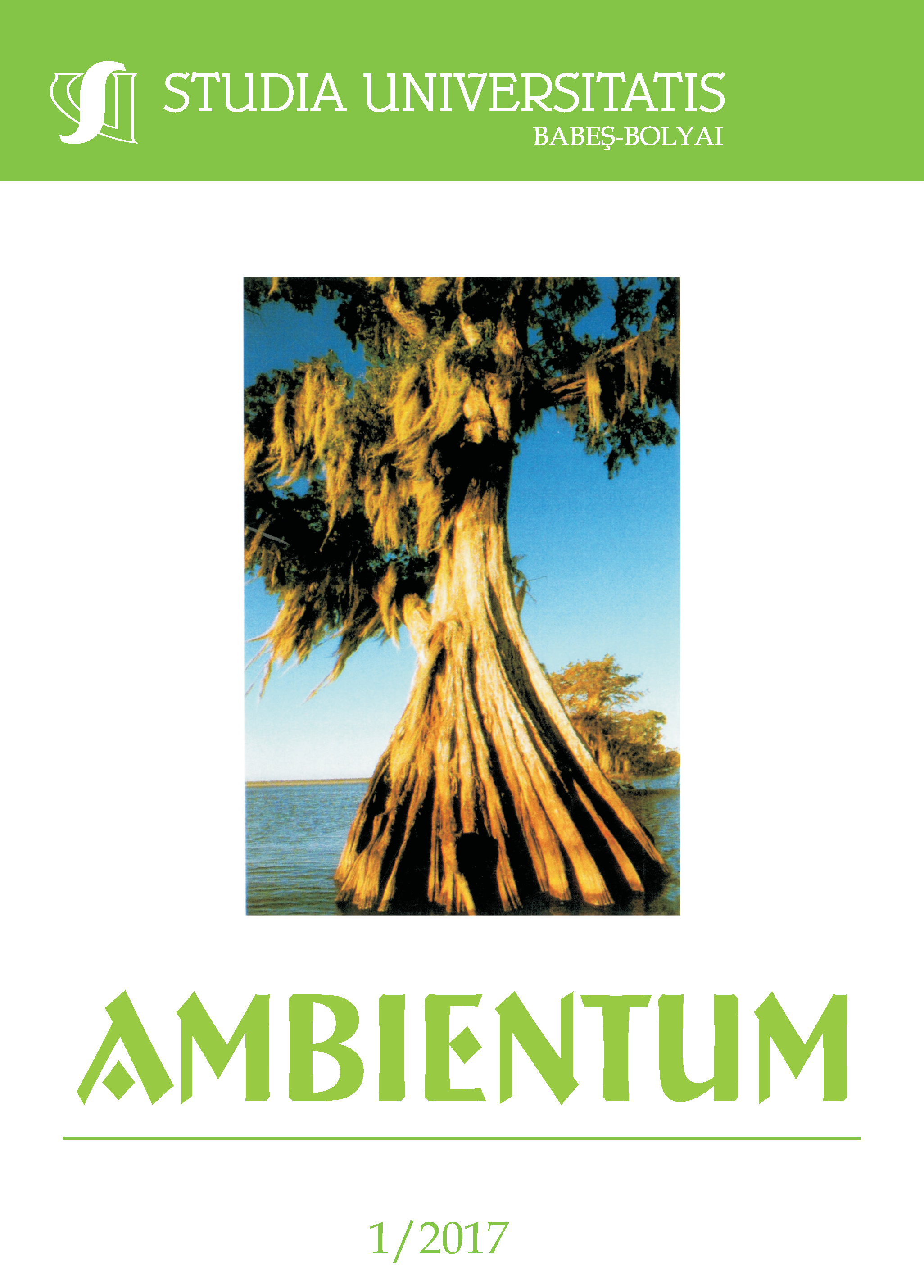THE RECYCLING OF THE RUBBER WASTE BY INCORPORATION INTO THE CEMENT MATRICES
DOI:
https://doi.org/10.24193/subbambientum.2017.1.05Keywords:
rubber waste, recycling, sustainable waste management, cement.Abstract
The rubber wastes result mainly from the automobiles, but may also result from the construction or from other industrial activities as well as from households. Increasing the use of the rubber has generated an increase of the amount of rubber waste resulted. Thus, the increasing of the amounts of the rubber waste produces important environmental issues, especially when they are stored. The degradation of the tires take long times, by comparison, we can even say that rubber wastes have an unlimited lifetime compared to other organic wastes. In addition, in the case of an accidental ignition of the stored tires, their combustion releases gases containing hazardous chemical compounds, and fine particles, into the environment. Some of that gases produced by ignition are dangerous not only for the environment but also for the human health. These are some of the reasons why the European legislation prohibited the storage of rubbers in the landfills. In this context, the recovery and the recycling of the rubber waste to the detriment of their storage become very important. This paper studies the possibility of the recycling of the rubber wastes by incorporating the crumbs of rubber in the cement. The rubber crumbs were added to the cement, partially replacing the fine aggregate in the cement matrix, in various proportions (10, 20, and 30% weight units). The characteristics of the resulting types of cement were evaluated from their mechanical and physical properties.References
Al-Nasra M., Torbica Z., 2013, Concrete Made for Energy Conservation Using Recycled Rubber Aggregates. International Journal of Engineering Science Invention ISSN (Online): 2319 – 6734, ISSN (Print): 2319 – 6726 www.ijesi.org, 2 (9), pp.10-16.
Bujoreanu C., Nedeff F., Benchea M., Agop M., 2017, Experimental and theoretical considerations on sound absorption performance of waste materials including the effect of backing plates. Applied Acoustics, 119, pp. 88–93.
Downard J., Singh, A. Bullard, R. Jayarathne T., Rathnayake C.M., Simmons D.L., Wels B.R., Spak S.N., Peters T., Beardsley D., Stanier Ch.O., Stone E. A., 2015, Uncontrolled combustion of shredded tires in a landfill e Part 1: Characterization of gaseous and particulate emissions. Atmospheric Environment, 104, pp. 195-204.
Girskas G., Nagrockiene D., 2017, Crushed rubber waste impact of concrete basic properties. Construction and Building Materials, 140, pp. 36–42
Gupta T., Siddique S., Sharma R.K., Chaudhary S., 2017, Effect of elevated temperature and cooling regimes on mechanical and durability properties of concrete containing waste rubber fiber. Construction and Building Materials, 137, pp. 35–45.
Layachi G, Hadda H., Amar B., 2016, Effect of elevated temperatures on physical and mechanical properties of recycled rubber mortar. Construction and Building Materials, 126, pp. 77–85.
Ling T.C., Nor H. M., Hainin M.R., 2009, Properties of Crumb Rubber Concrete Paving Blocks with SBR Latex. Road Materials and Pavement Design, 10 (1), pp. 213-222.
Mendis A.S.M., Al-Deen S., Ashraf M., 2017, Behaviour of similar strength crumbed rubber concrete (CRC) mixes with different mix proportions. Construction and Building Materials, 137, pp. 354–366.
Mikulionok I.O., 2015, Structural implementation of the process of elasto-deformation shredding of rubber-containing wastes (survey of patents), Chemical and Petroleum Engineering. 51 (9–10) (Russian Original Nos. 9–10, Sept.–Oct., 2015), DOI 10.1007/s10556-016-0093-9.
Oikonomou N. and Mavridou S., 2009, The Use of Waste Tire Rubber in Civil Engineering Works. In: Khatib, J., Eds., Sustainability of Construction Materials, 9, pp. 213-238.
Pitre J. G., 2000, Improving the sound absorbing capacity of Portland cement concrete pavements using recycled materials, Bachelor of Science, University of New Hampshire, 2000, Thesis, Submitted to the University of New Hampshire in Partial Fulfillment of the Requirements for the Degree of Master of Science in Civil Engineering, May 2007, 97 p.
Rafique R. M. U., 2012, Life Cycle Assessment of Waste Car Tyres at Scandinavian Enviro Systems, Master of Science Thesis in Chemical and Biological Engineering, Chalmers University of Technology, Göteborg, Sweden, December, 47 p.
Rezaifar O., Hasanzadeh M., Gholhaki M., 2016, Concrete made with hybrid blends of crumb rubber and metakaolin: Optimization using Response Surface Method. Construction and Building Materials, 123, pp. 59–68.
Sgooba S., Marano G.C., Borsa M., Molfetta M., 2010, Use of rubber particles from recycled tires an concrete agregate for Engineering Applications, Second International Conference on Sustainable Construction Materials and Technologies June 28 - June 30, 2010, Università Politecnica delle Marche, Ancona, Italy. Main Proceedings ed. J Zachar, P Claisse, T R Naik, E Ganjian. ISBN 978-1-4507-1490-7.
Sienkiewicz M. J., Kucinska-Lipka H., Janik H., Balas A., 2012, Progress in used tyres management in the European Union: A review. Waste Manage., 32 (6), pp. 1742–1751.
Sienkiewicz M., Janik H., Borzedowska-Labuda K., Kucinska-Lipka J., 2017, Environmentally friendly polymer-rubber composites obtained from waste tyres: A review. Journal of Cleaner Production, 147, pp. 560-571.
Tiwari A., Singh S., Nagar R., 2016, Feasibility assessment for partial replacement of fine aggregate to attain cleaner production perspective in concrete: A review. Journal of Cleaner Production, 135, pp. 490-507.
Xiaovei C., Sheng H., Xiaoyang G., Wenhui D., 2017, Crumb waste tire rubber surface modification by plasmapolymerization of ethanol and its application on oil-well cement. Applied Surface Science, 409, pp. 325–342.
Youssf O., El Gawady M.A., Mills J.E., 2015, Experimental investigation of crumb rubber concrete columns under seismic loading structures. Research Journal of The Institution of Structural Engineers, 3, pp. 13–27.
Downloads
Published
How to Cite
Issue
Section
License
Copyright (c) 2017 Studia Universitatis Babeș-Bolyai Ambientum

This work is licensed under a Creative Commons Attribution-NonCommercial-NoDerivatives 4.0 International License.





 ISSN (online): 2065-9490 | ISSN (print): 1843-3855 | ISSN-L: 2065-9490
ISSN (online): 2065-9490 | ISSN (print): 1843-3855 | ISSN-L: 2065-9490